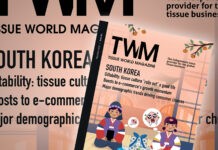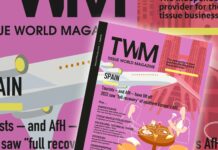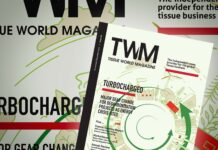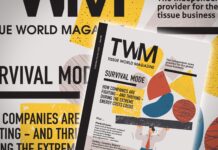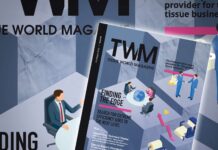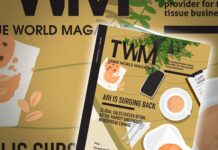By Helen Morris, Tissue World editor
As 2013 draws to a close, this issue of TW reflects on the key trends and project start-ups of the past year and looks in detail at what the industry can expect in 2014.
Our two special features, the Project Survey and Annual Review, make for reflective reading. This year’s Projects Survey charts new tissue capacity being added, ordered or in final planning stages in 2013-2014. Details of some 151 projects have been revealed for 2013-2014, with China claiming a staggering 75 of them.
Many projects have been delayed or closed as the prospect of overcapacity increasingly shapes the market. The global tissue market can’t absorb all of the announced capacity and so it’s likely that the number of closures will accelerate again in 2014. As our Marketissues article highlights, if these ambitious expansion plans do continue at this pace, particularly in China, it will create an even bigger threat to tissue margins.
In our Annual Review, key industry players reflect on 2013 and give their predictions for trends in 2014. Political concerns in some countries have impacted supplies in Europe. Customers’ expectations in all regional markets and product sectors continue to increase and tissue production is expected to become even more competitive, while energy and environmental costs also increase.
However, demand for the majority of sectors in the tissue market is expected to remain resilient and recession-proof. Technologies are expected more than ever to decrease production costs and help overcome raw material price increases. Long term efforts in innovation, sustainability initiatives and improving energy efficiencies are already paying off.
GERMANY: READY TO MEET THE CHALLENGE
A gleaming top of the range Mercedes-Benz parked in a car park of the competitively stocked and priced supermarket Aldi. It’s a famous cliché in Germany, and as with all the best clichés it has an element of truth. It means that even Germans, proud participants in Europe’s leading economy, are feeling the pinch.
It’s nowhere near as serious as many of the other nations whose currency is the euro, but the fact that it is being felt here casts a worrying shadow over certain fundamental problems which have loomed up on to the horizon.
The statistics make for a strangely contrasting picture: Europe’s leading economy, but a rapidly ageing population with all its attendant financial burdens; one of the lowest birth rates in the world; relatively low immigration.
As for the country’s tissue industry: per capita consumption is at a ceiling. Consumers purchase the full range of retail tissue products, consuming 13.7kg of tissue per year, a figure that’s a little above the western European average of 11.9kg in 2012. Sustainability is high on the agenda and is proving a vital tool for the industry.
The German tissue market represents around 20% of the European Union’s capacity, making 1.5m mt/yr of T&T. Machines are typical in terms of the trim range for the region, with the average being 3.6 metres, while average mill production is on the high side compared to other producing countries in the EU at nearly 100,000 MT/Yr.
Significantly, a daunting 78% of tissue sales in 2012 were accounted for by private label.
As Metsä Tissue’s Christoph Zeiler, who TW met for this issue’s German Country Report, explains that while there are no simple solutions to the big challenges “what there is in the German market is room to grow and innovate. But it’s up to us to be active.”
Tissue has a history of technological innovation, product initiatives and energetic marketing. It’s time to write another winning chapter.



























